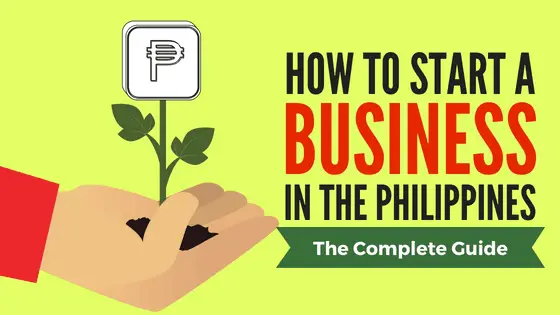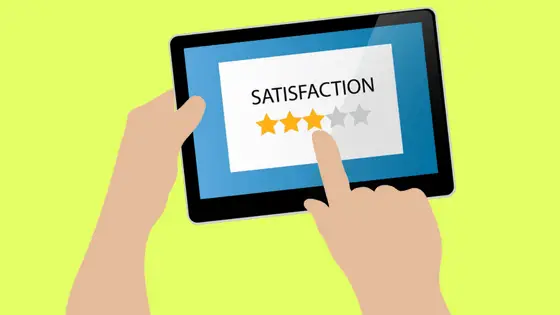How To Start a Business in the Philippines: The Complete 15-Step Guide

Here’s the cold harsh truth about employment:
It’s a rat race and even if you win it, you still end up a rat.
A rat with no control over his schedule, income, and projects to work on.
I’m not saying everyone should leave their jobs en masse. Some people consider their jobs as a vocation and can’t imagine doing anything else.
But for others who are yearning for more freedom and feel stuck at their current jobs, there’s a great alternative–entrepreneurship.
The best part is you don’t have to start big. Even with a small capital, you can open a business in the Philippines and make it profitable through smart planning. This article will teach you exactly how.
How To Start a Small Business in the Philippines With Small Capital: A Step-by-Step Guide
Great things start from small beginnings.
When they started their businesses around WWII, Max’s Restaurant and National Bookstore were deprived of advantages. But with sheer persistence and great strategies, they eventually became household names.
The same is true for almost all the famous brands we recognize today.
Therefore, whether you want to supplement your current income or become your own boss someday, the only way to go big is to start with a small business.
Small business or small-scale enterprise is one that hires few employees and has a relatively smaller asset size.
In order for a small business to qualify for government assistance and incentives, it should have capital assets amounting from Php 3 million to Php 15 million and with employees numbering from 10 to 99 workers1. Anything below these levels is classified as microenterprise while businesses that exceed them are known as medium- to large-scale enterprises.
However, the consensus today is that micro, small, and medium enterprises all fall under the general term “small business”.
By starting a small business in the Philippines, you as the owner will pretty much wear several hats–from marketing and finance to production and management.
Hence, it’s crucial to arm yourself with knowledge about all these fields especially at the beginning when you still don’t have the means to hire specialists.
This article will teach you how to start a business in the Philippines with a small capital, no business experience, and little or no college education.
Let’s get the ball rolling.
Step 1: Know your “Why.”

Holocaust survivor Victor Frankl wrote in his book that “those who have a ‘why’ to live can bear with almost any ‘how'”.
Starting a business may not be as tragic as a Holocaust but it is certainly not a walk in the park either.
On one side, owning a business gives you unlimited opportunities to earn money, be your own boss, explore your creativity, help others, and build a legacy.
But there’s another side to the entrepreneurial coin: the risk of failure.
In addition to that, starting a business in the Philippines where unpredictability abounds will push you to go beyond your comfort zone. Success won’t come easily. Long hours of work, missed family times, and sleepless nights will hound you especially during the early stages.
And did I mention you’ll be juggling a lot of hats so you’ll be responsible not just for the welfare of your family but also for the livelihood of your own employees?
So, before taking the plunge, test the water first.
If you only want extra income, don’t resign from your job and look for a part-time job instead. But if you want complete control of your destiny, then it’s time to plan your exit. It doesn’t matter if you take baby steps; what’s important is you carefully weigh the risks and rewards and then make a decision based on your own judgment.
If you get discouraged, look at yourself in the mirror and ask the big “Why?”
As long as you know your purpose for starting a business, you can weather any challenges that life may throw at you.
Step 2: Understand What It Takes To Succeed in Entrepreneurship

You don’t need an MBA to start a profitable business in the Philippines.
However, life-long learning is at the core of successful entrepreneurship. You learn best from your own failures and the mistakes of those who came before you.
Another way to hone your knowledge is to take free or paid training courses designed for beginners. For example, the Philippine Trade Training Center (PTTC) and the U.P. Institute for Small-Scale Industries offer “start your own business” programs that will teach you basic principles of running a business.
We also recommend the following training centers/courses:
- Businessmaker Academy (1503A West Tower, Philippine Stock Exchange Building, Exchange Road, Ortigas Center, Pasig City).
- TESDA Online Entrepreneurship Training Program.
- Ultima EntrePinoy Center for meat processing, baking, and other food business courses (Nutrition Foundation of the Philippines Building, 107 E. Rodriguez Sr. Ave., Quezon City).
- Department of Trade and Industry Negosyo Center – Seminars and Workshops.
Entrepreneurial success takes more than just technical knowledge. Your business can only grow to the extent that you do. Hence, it’s important to also invest in personal development if you want your small enterprise to prosper.
According to Management Systems International2, there are attributes common among successful entrepreneurs that led them to the success they have today. These characteristics can be grouped into three clusters–Achievement, Planning, and Power.
Achievement cluster
- Opportunity-seeking – the ability to see opportunities and seize them as they come. For example, when people from your hometown are craving for donuts and there’s no single donut store that has been put up yet, will you be quick to act on this opportunity? An opportunity-seeking business person certainly would.
- Persistence – a trait that will allow you to stick to your vision even in the face of criticisms and failures.
- Commitment to contract – which means getting the job done on time and honoring your promises without any excuses.
- Risk-taking – or more specifically, taking calculated risks to minimize potential losses. A good business person doesn’t just invest in any venture without carefully studying the market and identifying flaws in the business model.
- Demand for quality and efficiency – a characteristic of great entrepreneurs who uphold excellence in everything they do and don’t just settle in a “puwede na ‘yan” attitude.
Planning cluster
- Goal-setting – a skill that enables you to clearly define your goals and withstand the pressures and struggles of today in the name of achieving these goals.
- Information-seeking – a quality you need in order to come up with informed decisions and calculated risks. When the future of your business is at stake, you gather only the best information from all the best sources–suppliers, experts, competitors, banks, and even government agencies.
- Systematic planning and monitoring – while planning gives you the opportunity to choose the right supplies, manpower, and materials to achieve your goals, monitoring allows you to fine-tune your plan to bring you closer to achieving your goals.
Power cluster
- Persuasion and networking – if you know how to leverage the power of persuasion, you can literally make everything you want to go in your favor: from persuading the bank to give you a loan to convincing your buyers that your product is worth a try.
- Self-confidence – if you don’t believe in yourself and your ideas, then no one else will. You can’t succeed in any undertaking if you have a deflated ego. Believe in your dreams and everything else will follow.
Step 3: Come Up With a Business Idea

Every successful business starts with one idea.
The problem, however, is many people think that a million-peso idea only shows up in a select few; it’s either you have it or you don’t.
While it’s true that some successful entrepreneurs got their ideas by accident, they are exceptions rather than the rule. For most of us, a winning business idea won’t magically fall into our laps so we have to look for it ourselves.
To start generating a list of business ideas, ask yourself the following questions:
What are the things you’re interested in?
Running a business can be tedious in the long run so you might as well choose a business that is in line with your interests.
Don’t worry if the idea has already been taken. Your goal, after all, is not to be original but to explore an already existing idea you’re interested in, turn it on its head, and make it better than what’s already out there.
Instead of trying too hard to be original, find ways to dominate an already existing market by offering better, cheaper, or faster products or solutions.
Do you have pain points in your life or problems that bother you that you wish could be solved?
Famous entrepreneur and Internet personality Gary Vaynerchuk believes that the best way to find the next great business idea is to stop looking3.
Instead, go through the daily grind of life with an open mind so that you can zero in on things that bother you when you encounter them. Chances are, you’re not the only one experiencing the same problem so if you figure out how to fix it, then you have a potential business idea.
The key here is to always have a problem-first approach; after all, the world doesn’t need more products but more solutions to their everyday problems.
What are your core skills or the skills you’ve developed?
You’re more likely to succeed in a business if you have the experience, knowledge, and skills that it demands.
Look back at your employment history and note the skills you’ve developed over the years that you’re both naturally good at and you enjoy doing. These can provide clues on what kind of business to pursue.
And we’re not just talking about skills that you’ve developed in your previous jobs; those that you’ve learned outside work are equally important and perhaps more reliable in helping you figure out what business to try. Since you enjoy doing them without any incentive to motivate you, then you can potentially turn it into a business you’ll never get bored doing.
What businesses are currently booming/trending?
First of all, there’s a difference between a business fad and a business trend. Whereas a business fad enjoys initial hype but proves to be short-lived, a business trend lasts longer as the consumers don’t easily lose interest in the product/service.
Apparently, your focus should be on the trending businesses because more people doing it means the idea is very profitable. In the Philippines, trending business ideas fall in any of these three categories: Food, online, or service.
Food businesses either focus on food manufacturing (i.e., creating your own products from scratch like what Eng Bee Tin did and other big names with humble beginnings in their founders’ own kitchens) or food trading which involves selling ready-made or frozen products like siomai, shawarma, etc.
Online home-based businesses are mostly done by professionals who sell their services instead of tangible products. These include virtual assistants, freelance writers, social media managers, bloggers, bookkeepers, graphic artists, and many more.
Last on the list are businesses in the service industry that are now thriving as more and more people become busier. Some of the best examples are laundry businesses, transportation/delivery services, pet grooming businesses, photography businesses, and wedding and events coordination businesses, among others.
In addition to asking yourself the above questions, you can further increase the number of business ideas you generate by reading this article: 100+ Best Small Business Ideas in the Philippine with High Profit.
Step 4: Conduct Market Research

Starting a business without doing market research is akin to entering an unfamiliar territory without any map to guide you.
But what exactly can you achieve with market research? The answer is knowledge. A wealth of information and insights about who and where your customers and buyers are; when they’re most likely to buy or use your product/service; who your competitors are; and how big is the potential market demand for the product/service you’re currently developing.
In other words, everything that can help your business start off on the right foot.
This step has three components:
- Market segmentation;
- Market research;
- Competitor analysis.
To begin your research, you have to know first that your business doesn’t necessarily need to appeal to everyone. It’s easier to focus on one segment of the market first and then expand later on.
In order to find this target market, you need to divide the general market into smaller subgroups. Also known as market segmentation, this process involves grouping the market according to location, demographics, behavior, or other variables that make sense for your business.
Let’s say you’re planning to develop and sell a mobile phone. You can find your market either at shopping malls or online shopping sites where mobile phones are being sold.
Through market segmentation, you can divide this market into different groups according to their motivations in buying a mobile phone. There are the housewives who only need phones with the most basic features since they’re only using them to call their loved ones; the students who look for phones with cameras and other features that will help them with their studies; the yuppies who prefer phones with a flashy look and more features to meet their professional needs; and so on and so forth.
Another example would be a business that will manufacture its own soap. There’s a huge market for soap but what type of soap exactly?
With the use of market segmentation, you’ll be able to identify different segments of the market with varying demands for a specific type of soap. There are the buyers who want to achieve whiter skin; people with sensitive skin who want to get rid of their pimples; people who just want a skin-friendly moisturizing soap; those who want scented soaps; people who prefer herbal soaps; etc.
After segmenting the market, it will be easier for you to figure out which specific group or type of buyers will be the target of your marketing efforts.
Once you’ve identified your target market, it’s time to put it under the microscope and get to know your prospective customers a little bit better.
This is when the market research comes into the picture. You employ tools and techniques to reach out to your target market and discover what makes them tick.
And if the sound of “market research” intimidates you, don’t worry. Although big companies require an equally big budget to recruit a huge number of respondents for their market research, small entrepreneurs can also gain access to a wealth of valuable information about their target markets without breaking the bank.
The following are the most common techniques you can use to conduct low-cost market research:
1. Survey – is the old-school way of collecting data from a sample group that is assumed to be the representative of the whole. You can use this method to learn what people think about the products currently available in the market and how you can create a better one in terms of quality and price.
Just make sure the survey participants are neither your friends nor relatives because of the biased opinions they tend to provide.
The questions in the survey should explore the factors the respondents consider when buying; what they like or dislike about the current products in the market; the kind of improvements they would like to see; and the price of the product that is reasonable for them.
2. Observation – is probably the crudest form of market research but one that remains effective nonetheless.
It can be in the form of contextual observation where the entrepreneur pays close attention to a sample of the target market as they use or experience a certain product or service. Other entrepreneurs take matters into their own hands and do a mock journey where they put themselves in the consumers’ shoes by buying and using the product/service themselves.
3. Prototyping – known in layman’s terms as simply “taste test” or “sampling”, this method allows the entrepreneurs to put their minimum viable product (or the early version of their product, warts and all) out there and use the customers’ feedback to further improve the said product as they go along.
Market research is a critical part of your initial entrepreneurial journey as it will help you realize whether there’s a demand for your product or not and if there is, who is most likely to buy it, how many they are, where they’re located, and how you can promote your business to them.
It will also identify both your direct (i.e., businesses selling the same product/service) and indirect competitors (i.e., businesses selling different products/services but are in the same category as you).
Speaking of competitors, the competitor analysis is just as, if not more, important than the market research itself.
Not finding time to learn more about your competitors, what they offer, and how much they cost will put your business on the losing end. This is because competitive analysis helps you discover ways to give your business a competitive advantage which will effectively prevent your target market from choosing others over yours.
Aside from collecting and analyzing available data about your competition, you can also go the extra mile and buy your competitor’s products to test them yourself. This way, you can once again put yourself in the customer’s shoes and gain ideas on how you can improve their experience through a product that only your business can provide.
Step 5: Decide Who Will Run the Business

Most starting entrepreneurs build their businesses on their own as a single proprietorship. However, entrepreneurship can be a lonely endeavor so there’s nothing wrong with starting a business with a partner or a group of people.
The following are the different types of business according to ownership and the pros and cons of each to help you decide which path to take:
- Single proprietorship – is the most basic type of business wherein you basically run the whole show. While it’s easier to set up and you’re free from outside interference, this type of business is also the most demanding and puts you at high risk for burnout. The growth of your company is also limited by your financial means.
- Partnership – a business owned by at least two parties, this is also relatively easier to set up than a corporation and has the advantage of having the check and balance maintained by the co-owners. Businesses under a partnership tend to grow faster than sole proprietorship since there is more than one investor. However, more owners mean more chances of having a conflict.
- Corporation – is a business run by at least five people. Like a partnership, a corporation can also grow faster because of the number of shareholders and is also highly flexible because all the owners can share the responsibilities. The downside is corporations are taxed more than sole proprietors, more difficult to set up, and have a tendency to institutionalize a bureaucracy.
To help you further in deciding which type of business structure to pursue, I recommend reading this section in our business registration guide. It contains crucial information on how to choose the right business structure based on your intention, risk appetite, capacity to raise capital, and other factors.
Step 6: Write a Business Plan

Ever heard of the saying “if you’re failing to plan, you’re planning to fail?” Nothing can prove this better than starting a business where your own (or your investors’) hard-earned money is on the line.
This is why writing a business plan is crucial regardless of the size of the business you’re planning to start.
A business plan is a document that will show how your business will evolve from start to finish. It offers a closer look into your business model and helps identify any loopholes in its profitability, thereby giving you a clearer picture of whether the business is worth pursuing or not.
Specifically, a business plan will help you accomplish the following:
- Prevent or eliminate the risk of losing money invested in businesses that are proven to be lacking in demand.
- Reduce total expenses that would not have been possible without a business plan to help you examine details that are easily overlooked. Remember, every peso counts when you’re starting a business in the Philippines so you don’t want it to be wasted on something not essential.
- Establish a healthy cash flow for your business especially during the lean and peak months. Cash is king when it comes to running a business for without it you’ll always be on the verge of bankruptcy. Through a business plan, you can create a contingency plan to make sure your business will stay afloat when the demand slows down and will be prepared enough to handle increased demands during peak seasons.
- Set goals in terms of the total number of sales, revenues, or expenses and measure the actual performance of your business against these set goals.
- Convince investors or lending institutions to lend you money to start your business. No sane person will easily hand you the capital for your business unless you can provide a well-thought-out business plan containing details on how the business will work and earn back the initial investment.
If you truly know your business inside out, it’s not that hard to write your own business plan. The more complicated and larger the business, the more pages the business plan would require.
Should you need assistance in writing a business plan, you may approach the following people/institutions:
- SME Counselors from the Department of Trade and Industry (DTI);
- Freelance consultants who charge lower fees than consulting firms because they don’t deal with big overhead expenses;
- Accountants/bookkeepers;
- Business professors;
- Extension offices of business schools like Baguio’s St. Louis University Extension Institute for Small-Scale Industries.
As for the content of the business plan, it must depend on what kind of enterprise you’re planning to start. No two businesses are alike so the business plan should be written according to the uniqueness and conditions of your business.
In general, however, the following sections are considered basic components of a good business plan:
- Title page – contains the name of your business and other basic details of your enterprise.
- Executive Summary – provides an overview of what the company or business idea is all about, the problem the business is going to solve, the solution your business will provide, and how it will fit into the marketplace. This section will give investors an idea of whether to invest or not so make sure to leave a great first impression.
- Business description – explains the type of business you’re planning to start, the industry it belongs to, and what it will look like in the future.
- Market strategies – describe how big the market you’re trying to penetrate, who your target market is, and how you plan to sell to this market.
- Competitive analysis – explores who your competitors are, their strengths and weaknesses, and how your business stack up against them. Essentially, this section shows what makes your business different from everybody and how you’re going to use this to beat your competitors.
- Design and development plan – determines what exactly is your product or service and how you will develop it over the short term, medium-term, and long term.
- Operations and management plan – describes how a day in your business will look like.
- Financial plan – discusses in detail where the money to fund your business will come from and whether it will be self-funded or financed by outside investors. It also covers the projections you should create and what factors you should take into consideration; how much financing you need to start the business; how long it will take to pay back the investments (ROI); how will the ownership be divided, if applicable; and your backup plans in case profits or the demand for your business dries up.
When writing your business plan, keep in mind that nothing is final. It’s a living, breathing document that you can update every now and then as your business evolves.
Step 7: Build Your Product/Service

Now that you have a business plan, you can start developing your minimum viable product. This is the earliest version of your product that you’ll introduce to your target buyers. You’ll then use their feedback in order to improve the product prior to mass production.
Even if you’re a perfectionist, it’s virtually impossible to create the perfect product or service right off the bat. So instead of succumbing to analysis paralysis, just release the first batch of your product into the wild and let the feedback dictate what changes you need to make.
Whether you’re planning to sell handicrafts, homemade cakes, or something more complicated, there are important aspects of product development you just can’t afford to take for granted. These are the following:
1. Process. Review the different steps that it will take to create your product. Are all of these steps necessary or can you remove some of them to save on costs without sacrificing product quality? What are tools and equipment will you need and how many skilled workers are needed to operate them?
2. Machines and equipment. Determine the things you’ll need to create your product, how much they are, and where are the best places that offer quality products at a minimal cost.
There are also some considerations to make depending on what type of business you’re going to start. Whereas a simple crafts business may only require hand tools and inexpensive machines, an Internet café will require specific computers with features that are completely different from those intended for personal use.
3. Materials. Know where and how you’ll get the materials you need as they will determine the pricing and eventually the profitability of the finished product.
For example, if your supplier is far from your business plant or location, and the transport facilities in the said place are limited, it will not only result in production delays but also additional manufacturing costs that will then jack up the price of the product.
However, it doesn’t mean you should just settle for the cheapest materials. Remember, don’t make a final decision based on price alone4 as the reputation of your business is on the line.
To find the best deal, you can search online, get industry recommendations, or attend trade shows, among others.
4. Design. The product and the packaging must be able to get someone’s attention within the first few seconds of him/her glancing at them. The packaging should have a clean design, legible text, and clear branding that people recognize even from several feet away.
5. Pricing. Determine a reasonable price for your product/service by factoring in all the overhead costs. Make sure you have a good profit margin otherwise you may need to reduce the manufacturing costs (instead of increasing the product’s price) in order come up with a price that doesn’t turn off buyers.
The price of the product is also determined by the marketplace; if similar products are within a certain price range, then your product’s price should not veer off too much away from it if you want to capture the same market.
6. Trademark filing. Protect your business from copycats through trademark registration. You can either do it by yourself via the Intellectual Property Office of the Philippines (IPOPHL) website or hire a trademark lawyer to handle all the paperwork on your behalf.
Step 8: Get Feedback for Your Product

In the process of developing our product, we tend to be blinded by our own awesomeness that we forget what actually matters to those who will buy it. This is when feedback becomes very valuable.
Even if you’re only selling a humble kakanin, customer feedback will spell the difference between a profitable business and one that won’t earn repeat buyers.
Your aim is to get honest feedback from actual buyers (a.k.a strangers and not your close friends/relatives) so it won’t hurt if you offer free or discounted products in the beginning.
If you’re selling clothing items, on the other hand, you can sell beta versions of your products in small batches at first and let the customers order through your social media or website. These first few buyers can get your products at a discounted price in exchange for their feedback on the fabric, color, fit, comfort, and other areas of improvement of your product. Done right, these early adopters may turn out to be your first few brand advocates later on.
Through the strategy discussed above, you can get the product to your prospective customers’ hands faster instead of aiming for perfection that can never be attained, especially sans buyer feedback.
This principle, also known as Lean Startup5, can be applied to most businesses but most especially to startups that can’t afford to have a long incubation period for their products. Instead of being held back by perfectionism, they push out the early version of their products to the market in order to get that coveted feedback that will then propel those products into a series of improvements.
When collecting feedback from your prospective customers/buyers, remember these tips:
- Be thankful for the feedback regardless is it’s a positive or a negative one. This gesture will not only earn you their respect but also encourage them to continue providing honest opinions which you need the most.
- Dig a little bit deeper to learn what the negative feedback is all about. If someone doesn’t like your product, he or she is most likely referring to one aspect of the product and not its entirety. Ask questions to figure out whether to improve a specific flaw or just scrap the whole idea altogether.
- Look for patterns or the same comments given over and over again. Your customers know what’s best for them so if they’re specifically pointing out the same complaints, then address them as soon as you can before mass-producing your products.
Step 9: Look for Funding

Regardless of the size of your enterprise, you need money to get it started.
If you’re only selling home-cooked meals or desserts, you probably don’t need as much capital and you can start with whatever money is left in your savings account. No need to borrow money since you can get all or a portion of your profit and then reinvest it into your fledgling home-based business.
The same can’t be said for startups or huge businesses like restaurants that require large upfront capital. Aside from your personal savings, you may also need to go through several rounds of investing in order to get the business off the ground.
Here’s a list of different financing options in the Philippines you may consider to raise funds for your budding business:
1. Your own money. Using your life savings or proceeds from the sale of your personal assets is the safest way to finance your business. Since the money will come out of your pocket, you’ll be more in control of your destiny and retain 100% of your equity.
2. Friends and family. If your own money isn’t enough to raise the needed capital, you may also turn to your well-off friends and relatives with enough cash reserves. The advantage of borrowing from them is you’ll get relatively lower interest rates and more flexible payment terms compared to bank loans.
However, if you still fail to raise the needed funds after exhausting your own savings and borrowing money from friends and/or relatives, then it’s time to consider outside sources.
3. Government financing programs. The Philippine government is aware that small businesses are the backbone of the economy so they have established loan/credit programs to support our entrepreneurs.
Financial assistance is offered by different government agencies which include, but are not limited to, the following:
- Department of Science and Technology (DOST) and the Technology Resource Center which offer financing program for small businesses that are technology-related;
- Department of Agriculture‘s Agri-Microfinance Program or AMP which is designed to provide financial relief to farmers and fishermen (and their families) in drought- or calamity-stricken areas;
- Department of Social Welfare and Development‘s Sustainable Livelihood Program or SLP which seeks to improve the welfare and development of marginalized families through livelihood strategies.
For a comprehensive list of banks and government offices that offer financing programs for micro, small, and medium enterprises, you can check out the free ebook6 published by the Bureau of Micro, Small, and Medium Enterprise Development (BMSMED) in collaboration with DTI.
The Philippine government-owned LandBank of the Philippines also offers lending programs7 for those who are involved in the agricultural industry. These are the following:
- Cacao 100 (Credit Assistance for Cacao Agri-Business and other Organizations) – offers loan assistance to farmers and entrepreneurs with the main goal of catalyzing the growth of cacao output in the Philippines. This is a good choice if you’re looking to fund your cacao nursery, cacao plantation, and all the processes involved in cacao beans processing.
- Agricultural Credit Support Project (ACSP) – suitable for agri-businesses needing additional funding to support increased production or business expansion. This is ideal for entrepreneurs who are seeking financing for their fisheries, farm equipment, agriculture-related services, and agricultural product distribution.
- KAWAYAN (Kalikasang Kabuhayan para sa Wastong Pamayanan) – this program provides financial assistance for farmers, LGUs, and entrepreneurs who have businesses involving bamboo nursery, bamboo plantation, trading, and eco-tourism.
- ISDA (Integrated Support for the Development of Aquaculture) – is a program established to help small fishers as well as small and medium enterprises.
For more information about LandBank’s lending programs, you may contact their customer care center at (02) 405-7000, visit the nearest LandBank Lending Center, or send an email to [email protected]
4. Angel investors or Venture Capital investors. Another alternative source of funding is individuals or groups of individuals who already have the intent to invest.
Angel investors are established and wealthy individuals who use their personal money to invest in their chosen startups. The Angel Investment Network is a great online platform that enables you to find individual investors in the Philippines who can relate to the vision of your company.
Venture capital firms like Kickstart Ventures, on the other hand, is composed of a group of professional investors that pool together all the money coming from individuals, corporations, foundations, and pension funds and then invest them to startups of their choice, the majority of which are businesses dealing with technology and science.
5. Startup incubator or accelerator. The thriving local ecosystem has prompted the launch of several startup incubators and accelerators, most notable of which are the IdeaSpace Foundation, Launchgarage Inc., and QBO Innovation Hub, among others8.
The goal of these companies is to provide support to startups (mostly technology or fintech companies) in the form of office facilities, consulting, pitch events and equity-free seed funding that will help get their enterprises off the ground.
6. Banks. There are SME-friendly banks that lend money to entrepreneurs despite the risks associated with small businesses. Just make sure you comply with their requirements and show enough proof (including a business plan) that you have a clear vision for the business you’re going to start.
Examples of local banks known for supporting small businesses include the government-owned LandBank of the Philippines, the Development Bank of the Philippines, Metropolitan Bank and Trust Company, and the Planters Development Bank.
Related: Best Banks in the Philippines
7. Pitching competitions. Early-stage businesses can also get funding by joining televised pitching competitions like The Final Pitch and the upcoming reality show “Project GO”9 sponsored by GoDaddy Inc. and to be aired on AXN.
These reality shows will require qualified contestants to pitch their business ideas in front of a panel of esteemed Filipino business experts and investors (think Shark Tank). Since they’re joining a reality show, investment decisions will not be made unless the entrepreneurs go through a series of entertaining challenges first.
Prizes for winning contestants may be in the form of funding in exchange for partial ownership of their businesses or equity-free funding to help jump-start their ventures.
8. Other sources of financing. Small business owners can also consider the following when seeking credit assistance:
- Pawnshops – the ideal choice if you’re only looking for quick cash. You can get the money you need by pawing your jewelry, gadget, or other valuables and then pay back the amount along with incurred interest.
- Credit cooperatives – popular especially in rural areas, the credit coop can lend you an amount up to five times bigger than what you initially deposited when you joined. Unlike banks, credit coops charge a significantly lower interest rate for your loan.
- Lending investors – a cross between banks and money lenders, these companies offer short-term loans to small enterprises with interest rates of usually 3% to 5% a month–higher than those offered by banks but lower than those charged by money lenders.
Step 10: Formulate Marketing Strategies

In a nutshell, marketing strategies refer to how you’re going to convince or influence your target market to buy your product or services.
Your marketing strategies can be summarized into four key components. Let’s go over them one by one.
1. Product strategies – revolve around the product itself and how it will be perceived by your target market. It starts with good branding which is the design, reputation, name, logo, or a combination of these that make your product or service different from other similar products/services in the market. Consistent branding must also be present in the product’s packaging and labeling.
However, an excellent product can only go so far; you also need to invest in product support which is a catch-all term for all warranty, delivery, installation, and other services that come with the purchase of the product.
2. Place strategies – focus on how you want to bring your product or services to your target market. Depending on your business, you can use traditional or modern distribution channels (or even both).
Traditional distribution channels exist in the form of kiosks and brick-and-mortar stores where face-to-face interaction between the buyer and seller can cultivate a long-term buying relationship. New distribution channels, meanwhile, are those that don’t necessarily require an in-person interaction since the transaction can easily be completed via phone or the Internet.
Your choice of distribution channels depends on your target market’s preference and behavior, competition, as well as the current state of the market (think the 2020 pandemic that has forced restaurants and a lot of businesses to shift to e-commerce).
3. Price strategies – cover everything that concerns the price tag for your product.
How you price your product can make or break your business. Therefore, ensure you price your product or service in a way that will keep your business profitable while meeting the needs of the target market.
To come up with a price, there are three factors you have to consider. First is the cost of making the product or service you’re selling. You can add the total cost you incurred in producing your product and then divide it by the total number of the products to determine the unit cost.
For example, if you spent Php 1,500 to bake 100 chocolate cookies, the unit cost would be Php 15 (1,500/100). As for the selling price, you need to add a markup which is a percentage of the unit cost that you think when added will sufficiently cover the direct (i.e., materials, labor, etc.) and overhead costs. Say the markup is 20%, and 20% of Php 15 is 3, then the selling price is Php 18 (15 + 3).
The second factor you have to consider is the competition. You will use the price they have set for a similar product/service as a benchmark when determining the price of your own. You may either go higher to make the target market perceive what you’re offering as higher in quality or lower to make an introductory offer and in so doing gain your first few fans.
Lastly, the current demand for the product/service you’re selling can also determine the selling price. Simply put, the higher the demand for the product that only a few businesses are offering, the higher the selling price becomes. Conversely, the lower the demand for a product with plenty of supply, the lower the price will be.
4. Promotion strategies – make up the core of your marketing strategies since these cover all the tools and channels you’ll use to reach out to your target market.
Remember that whether you’re using Internet ads or television commercials to promote your business, it’s important to convey your message in a way that resonates with your prospective buyers.
To do this, you must focus on highlighting the benefits and not the features of the products. People won’t care how many advanced technologies you’ve used to produce your product unless it offers solutions to their problems. If you’ve studied your market well, then you should know by now what keeps these people awake at night and how your product can address this.
Step 11: Register Your Business

Now that you’re a few steps away from launching your own business, it’s time to legitimize it by securing all the required permits and registration documents.
Whether your business is a sole proprietorship, partnership, or corporation, you’re required by the government to register it. Doing so will allow your business to be legal in the eyes of the law, file tax returns, apply for government loans, and avoid incurring penalties.
The process of business registration in the Philippines can be long and frustrating. Fortunately, we’ve covered all the basics and condensed them into one easy-to-follow business registration guide in the Philippines.
Step 12: Find a Strategic Location

Choose the right location for your retail business and you already have the battle half-won. But how do you pick a great location? Here are some guidelines you need to follow:
- It should be near the source of raw materials. The main reason why some products are priced ridiculously high is that it costs a lot for the raw materials to be delivered to the business location. Therefore, putting up a business near the source of the raw materials (e.g., sugar millers near sugarcane plantation, food processors near fruit/vegetable farm) will bring the transport cost down and in so doing make the product price more affordable for the consumers.
- It should be where the market is. In the same way that you save on transport costs by placing your business near the source of your raw materials, you should also make sure that the business is near and accessible for people you intend to serve. If the target market exists within the vicinity of your own home, much better since you can start a home-based business and save on rental fees.
- It should be accessible to your employees and customers. Foot traffic is the lifeblood of brick-and-mortar businesses so make sure the place where you’ll establish your store is easy to find, has plenty of public transport, and has available parking spaces for everyone. This strategic location will benefit not just your customers but also your current and future employees. A business near a good source of skilled labor won’t have a hard time finding new employees should the need arises and will also save on accommodation costs since they’re within the commuting distance of the business.
- It must be in a place with a reliable and adequate supply of power, water, and Internet services. Even the slightest disruption in any of the aforementioned utilities can drastically affect your daily business operations so make sure you choose a location with an established infrastructure. If you’ll be renting a place, verify beforehand if the utilities are included in the lease so you won’t be caught off guard by any hidden charges.
- It should be in a safe and peaceful environment. Building a business in a neighborhood notorious for looting and other forms of violence is a huge risk you can’t afford to take especially if you’re a first-time entrepreneur. Pick a place where established businesses have been thriving for decades and whose residents have high purchasing power. You also need to ensure that your business will comply with existing ordinances and zoning restrictions in your chosen community.
- It must be in a decent and pleasant place. You don’t want to start a business in an environment that will drive prospective customers away so make sure to check the place for the presence of disagreeable things like smoke, noise, foul odors, dust, as well as proximity to places like bars and pub houses (unless your businesses are bars and pub houses).
- It should be where a moderate number of your competitors are operating. The presence of competition can either be a good thing or not. If the place is full of competing stores placed one after another, it may be more difficult to stand out and penetrate the market. On the contrary, the absence of any competitor may be a telltale sign that the place is bad for business, especially if it has a history of similar businesses closing down or going bankrupt. In most cases, however, establishing your business beside one or two competitors can actually be a good thing since the presence of similar businesses in one place will attract more foot traffic.
Step 13: Form Your Dream Team

A business won’t run by itself. It needs people to complete its daily operations.
As a business owner, it’s your responsibility to find and choose the right employees to join your dream team. If you own a retail business, the rule of thumb is to hire people who are highly approachable and have a positive attitude. A grumpy Debbi Downer is a liability that will cost you a lot of loyal customers.
Once you’ve found the right people, it’s time to train them well and incentivize them to do their best work consistently. In order to keep your employees motivated and committed to their jobs, not only should you pay them right but also treat them with the same respect and kindness you’d want to receive if you’re the employee.
Should you need assistance in providing technical training for your staff, the government can help you through various programs offered by the Technical Education Development Authority (TESDA), the Technology Resource Center (TRC), and the Department of Science and Technology (DOST).
When it comes to employees’ rights, there are a few important things you have to keep in mind to ensure you’ll be in good terms with your employees:
- All employees, male or female, are entitled to equal compensation and work opportunities. Discrimination is not allowed in any way or form so you should not do unacceptable things like not hiring a woman just because she’s married or firing an employee just because she got pregnant.
- Every employee should be assured security of tenure. You can’t dismiss an employee unless it’s due to a just or authorized cause. Termination can only be done after observing due process.
- Employees are normally required to work for 8 hours a day. This 8-hour period already includes rest periods of less than an hour but excludes meal periods of at least one hour.
- Employees are entitled to get a rest day after not more than 6 consecutive workdays. They can also file different types of leaves to take a break from work. These include the five-day Service Incentive Leave (SIL) with pay which can be availed by the employee after a year of service in the company; Maternity Leave which is granted to qualified female SSS members in anticipation of childbirth or due to abortion or miscarriage; and the seven-day Paternity Leave with pay for the male spouse of a woman who is about to give birth or has suffered from a miscarriage.
- Employees must be paid the right wage commensurate to the amount of work rendered as well as wage-related benefits like accommodation, overtime, rest day, night differential, 13th-month pay, and holiday.
- Employees deserve to be protected from any injury, sickness, or death through a safe working environment.
- All employees have a right to join or form a legitimate worker’s organization or labor union without the employer’s interference. These groups are established for the purpose of upholding their rights as workers and doing collective bargaining. For instance, workers can be represented by these organizations in tripartite decision-making involving them, the government, and the employers’ organizations. This way, they can have their voices heard in matters concerning workers’ wages and labor disputes.
Step 14: Purchase All the Needed Equipment and Supplies

Some businesses can get by with just manual labor. However, for those that invest in machines and equipment, the increase in business productivity and profitability can be phenomenal if done right.
Therefore, you have to apply the same meticulousness in selecting the supplies, machines, and equipment needed to produce your product. Follow these proven tips before making a purchasing decision:
- Have a clear idea of what you want to buy before heading to the store/supplier. Know the specific needs of your business, the kind of machine/equipment that can meet these needs, and all the engineering features and operating characteristics you’re looking for. This way, you can cut down on shopping time and simply go straight to comparing only the products that meet all your criteria.
- Shop around and don’t settle with the first supplier that you come across no matter how great it is. Instead, get information on each supplier that sells the machine/equipment you’re looking for and judge them one by one in terms of reliability, price, warranty, payment terms, delivery, installation service, maintenance, etc. Just because the product is the cheapest doesn’t mean it’s also the best; multiple factors will determine which one suits your business best.
- Choose excellent machine/equipment that is within your price range. Remember, it’s an expensive investment so make sure you have done your assignment of comparing the cost of each machine/equipment that you’ve shortlisted based on their fuel efficiency, capacity, and other technical matters. Alternatively, you can lease or buy a second-hand machine/equipment so you won’t have to spend more money on a new one.
Step 15: Launch Your Business

And there you have it: You are now ready to start your own business. Although this article has only covered the basic details of jumping into entrepreneurship, it should be enough to get you started.
Remember, it’s not unusual for first-time entrepreneurs to make mistakes in their first ventures but the lessons from these mistakes are what will propel you forward as you learn more about your business.
Entrepreneurship is not just about earning big bucks. It’s also about generating job opportunities that will help a lot of families. As an entrepreneur, you’ll be serving not just yourself but also the community around you.
Regardless of the outcome, consider this journey as a launching pad to greater things. And if there’s one thing that owning a business can teach you, it’s the truth that learning doesn’t stop.
So keep learning and have faith both in God and in yourself. Who knows? Your greatest breakthrough may be just around the corner.
References
- Bureau of Small and Medium Enterprise Development (BSMED). (2015). Your Guide to Starting a Small Enterprise [Ebook]. Retrieved from https://www.dti.gov.ph/resources/e-library/business/starting-a-business/guide-in-starting-a-business-enterprise/
- Bureau of Small and Medium Enterprise Development (BSMED). (2015). Do You Want to Go Into Business? [Ebook]. Retrieved from https://www.dti.gov.ph/resources/e-library/business/starting-a-business/guide-in-starting-a-business-enterprise/
- Entrepreneur.com. (2017). Need a Business Idea? The Best Way to Find One Is to Stop Looking. [Video]. Retrieved from https://www.entrepreneur.com/video/295451
- Goodman, M. (2015). The 7 Steps of Effective Product Development. Retrieved 10 August 2020, from https://www.entrepreneur.com/article/244616
- The Lean Startup Methodology. Retrieved 12 August 2020, from http://theleanstartup.com/principles
- Bureau of Micro, Small and Medium Enterprise Development (BMSMED). (2012). Financing Programs for Micro, Small, and Medium Enterprises (MSMEs) [Ebook].
- Summit Publishing Co. Inc. (2015). 52 Inspiring Success Stories: Breakthrough Ideas for the Aspiring Entrepreneur (pp. 7-9). Mandaluyong City.
- Noda, T. (2018). 10 Notable Incubators and Accelerators In The Philippines. Retrieved 14 August 2020, from https://fintechnews.sg/22610/fintechphilippines/incubators-accelerators-in-the-philippines/
- GoDaddy, AXN launch reality show to jumpstart ventures of Filipino entrepreneurs. (2020). Retrieved 14 August 2020, from https://mb.com.ph/2020/08/12/godaddy-axn-launch-reality-show-to-jumpstart-ventures-of-filipino-entrepreneurs/
Luisito Batongbakal Jr.
Luisito E. Batongbakal Jr. is the founder, editor, and chief content strategist of FilipiKnow, a leading online portal for free educational, Filipino-centric content. His curiosity and passion for learning have helped millions of Filipinos around the world get access to free insightful and practical information at the touch of their fingertips. With him at the helm, FilipiKnow has won numerous awards including the Top 10 Emerging Influential Blogs 2013, the 2015 Globe Tatt Awards, and the 2015 Philippine Bloggys Awards.
Copyright Notice
All materials contained on this site are protected by the Republic of the Philippines copyright law and may not be reproduced, distributed, transmitted, displayed, published, or broadcast without the prior written permission of filipiknow.net or in the case of third party materials, the owner of that content. You may not alter or remove any trademark, copyright, or other notice from copies of the content. Be warned that we have already reported and helped terminate several websites and YouTube channels for blatantly stealing our content. If you wish to use filipiknow.net content for commercial purposes, such as for content syndication, etc., please contact us at legal(at)filipiknow(dot)net